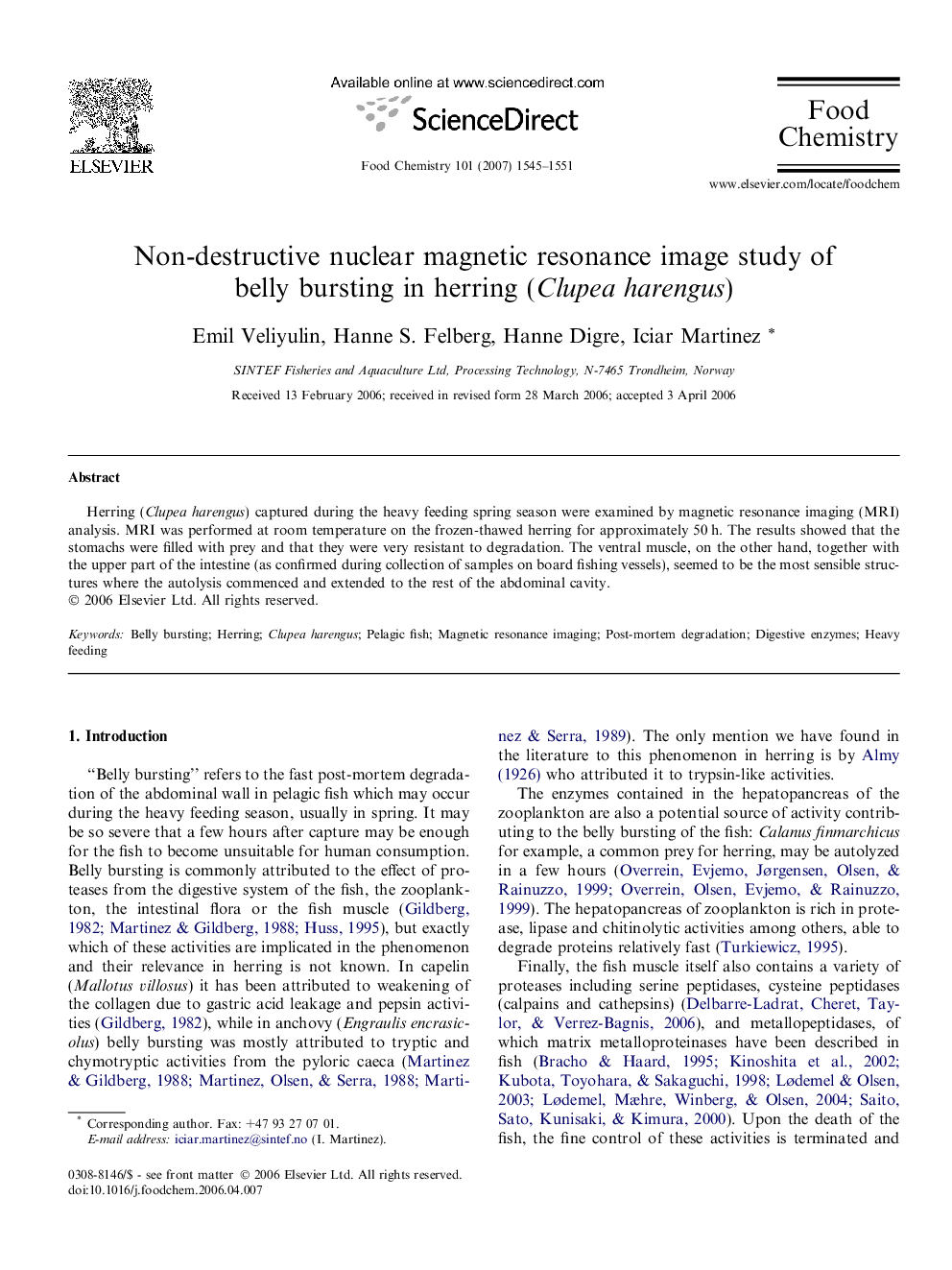| Article ID | Journal | Published Year | Pages | File Type |
|---|---|---|---|---|
| 1188229 | Food Chemistry | 2007 | 7 Pages |
Abstract
Herring (Clupea harengus) captured during the heavy feeding spring season were examined by magnetic resonance imaging (MRI) analysis. MRI was performed at room temperature on the frozen-thawed herring for approximately 50 h. The results showed that the stomachs were filled with prey and that they were very resistant to degradation. The ventral muscle, on the other hand, together with the upper part of the intestine (as confirmed during collection of samples on board fishing vessels), seemed to be the most sensible structures where the autolysis commenced and extended to the rest of the abdominal cavity.
Related Topics
Physical Sciences and Engineering
Chemistry
Analytical Chemistry
Authors
Emil Veliyulin, Hanne S. Felberg, Hanne Digre, Iciar Martinez,
